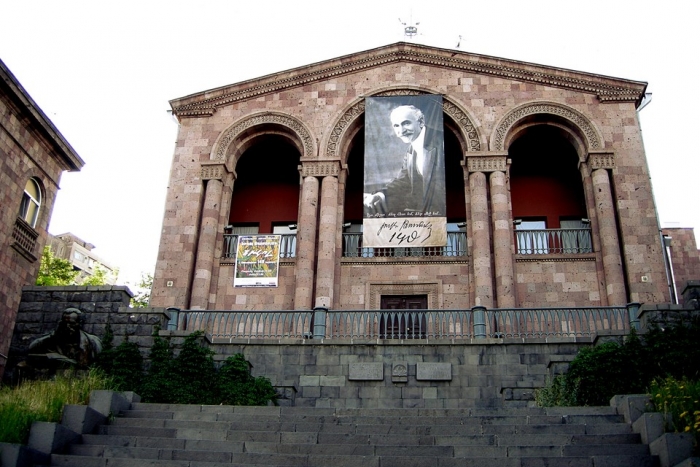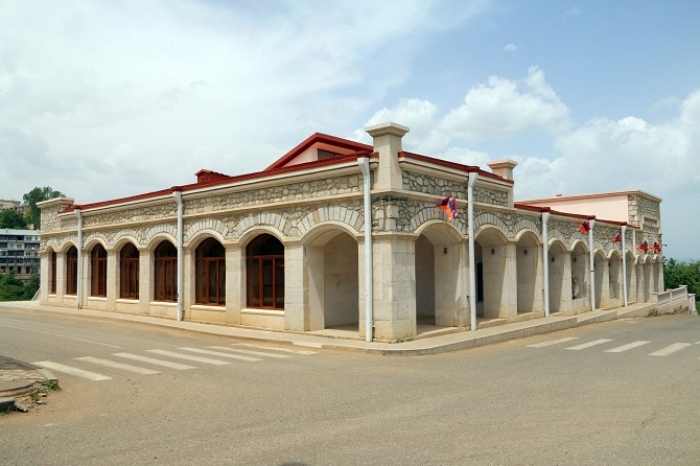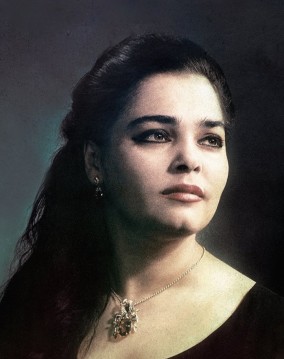Armenian Music
The Armenian music has its roots in the Armenian Highlands with people mostly singing traditional folk song. In the late nineteenth and early twentieth century due to the Armenian priest, composer and musicologist Komitas it was possible to collect the old and long tradition of Armenian music. The glorious height and presentation of the Armenian music to the world was by composers Aram Khachaturyan and Arno Babajanyan.
Melodic Basis
The base of the Armenian folk and church music tonal system is comprised of tetrachords that is different than the European one. The Armenian folk music is based on an endless scale, as the first note of the tetrachord starts with the last note of the preceding tectrachord.
Folk Music
The tradition of the Armenian folk music comes from antique times. Nowadays the traditional Armenian instruments they play are qamancha (similar to violin), kanun (dulcimer), dhol (double-headed hand drum, see davul), oud (lute), duduk, zurna, blul (ney), shvi and to a lesser degree saz. Duduk is one of the most popular Armenian traditional instruments. Among well-known duduk performers are Margar Margarian, LevonMadoyan, SaroDanielian, VatcheHovsepian, GevorgDabaghyan.
Popular traveling musicians called ashoughs played kamancha earlier in Armenian history. Among them well-know Sayat Nova or his Armenian initial name HarutyunSayatyan, was an Armenian poet, musician and ashugh, who composed in Armenian, Georgian, Azeri Turkish and Persian.
ArtoTunçboyacıyan is a well-known Turkish musician of Armenian descent, who is famous in Turkey and worldwide, and currently has his own jazz club in Yerevan, Armenia. He was the founder of the Armenian Navy Band.
Classical Music
Armenian classical composers include KemaniTatyosEkserciyan, one of the best-remembered composers of Ottoman classical music. Alexander Spendiarov (1871–1928), ArmenTigranian (1879–1950), and Haro Stepanian are best known for their Armenian operas. SargisBarkhudaryan (1887–1973) and Caro Zakarian (1895–1967) are representative composers of the pre- and early Soviet Armenian era.
 The most famous, however, was Aram Khatchaturian (1903–1978), internationally well-known especially for his music for various ballets and the immortal Sabre Dance from his composition for the ballet Gayane.
The most famous, however, was Aram Khatchaturian (1903–1978), internationally well-known especially for his music for various ballets and the immortal Sabre Dance from his composition for the ballet Gayane.
In classical music, many Armenian singers have gained worldwide recognition: sopranos GoharGasparyan, SonaGhazarian, ArpinePehlivanian, Lucine Amara, Cathy Berberian and, more recently, Isabel Bayrakdarian and Anna Kasyan, tenors TigranLevonyan, GeghamGrigoryan, and VahanMirakyan; basses AraBerberian, and Henrik Alaverdian, as well as the bass-baritone BarseghToumanian.
In the Diaspora, famous Armenian musicians such as pianist Şahan Arzruni and violinist Levon Chilingirian, and composers such as Alan Hovhaness have reached international fame.
Scott Giles (1965–) is an Armenian-American known for his many symphonies and concertos. Armenian-Canadian composer VahramSargsyan (1981– ) represents the younger generation of Armenian contemporary music composers who is mostly known for his choral compositions.
Religious Music
Armenian chant, composed in one of eight modes, is the most common kind of religious music in Armenia. It is written in khaz, a form of indigenous musical notation. Many of these chants are ancient in origin, extending to pre-Christian times, while others are relatively modern, including several composed by Saint MesropMashtots, who re-introduced the Armenian alphabet. Some of the best performers of these chants or sharakans, are at the Holy Cathedral of Etchmiadzin, and include the late soprano LusineZakaryan.
The Armenian religious music is written in khaz, that are considered Armenian notes. Many of these chants have ancient origins dating back to pre-Christian times. These chants, also called sharakans, are best performed at the Holy Cathedral of Etchmiadzin, with one of them the late LusineZakaryan.
In the end of the 19th century due to KomitasVardapetpolyphony was introduced in the Armenian religious music, as it was mainly a liturgical religious music.
The contribution of Komitas in Armenian music was immense, for which he is considered to be the founder of the Armenian modern classical music. In the end of the 19th and the beginning of the 20th century he travelled in the Armenian Highlands and collected thousandas of folk tunes.
Jazz in Armenia
The first jazz-band of Yerevan was founded in 1936. Soviet Jazz was developed by Armenians such as ArtemiAyvazyan, who founded the Armenian State Estrada Orchestra in 1938. The conventional performers in the vocal genre have been: GeorgiMinasian, ArtashesAvetyan, and LevonSevan.











